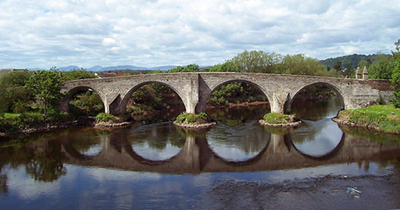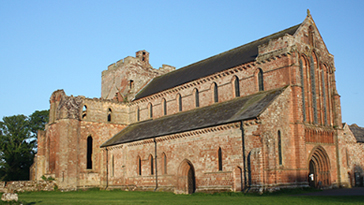William Wallace - The Battle of Stirling Bridge 1297
The bridge over the river Forth at Stirling was seen as the key crossing between the Scottish Lowlands and the Highlands. The English had been anxious to bring Wallace to battle and when he arrived north of the river the English army decided to cross the bridge and engage in battle on the north side. However, the bridge was a bottle neck and restricted the speed with which the army could cross. Wallace had taken up position on the steep-sided high ground now known as Abbet Craig. He was thought to have around 40,000 lightly armed foot soldiers as well as  180 horses.
180 horses.
Wallace attacked when only a small part of the English had crossed the bridge. The English were massacred and Cressingham was killed. John De Warenne, the Guardian of Scotalnd, still had enough soldiers to defend the bridge and deny Wallace the crossing but he panicked and fled back to Berwick-upon-Tweed. In so doing, he surrendered the Scottish Lowlands to Wallace and suffered more casualties as his soldiers were attacked during their retreat.
Right: Stirling Bridge today
Aftermath of the Battle
Wallace was knighted and made Guardian of Scotland. This was an extraordinary event as Scotland was a strongly feudal society and for a person outside the nobility to be raised to such a pre-eminent position in Scotland was a reflection of the lack of leadership and direction since the untimely death of the Scots King Alexander III in 1286. Subsequently Wallace raided into North Northumberland and sought to take the campaign to the English. Initially his army swept down the eastern coast but lacking siege engines he couldn't capture any major fortifications.
 Wallace then swept west into Cumberland attacking places such as Lanercost Priory (left) and Carlisle Castle. He got as far as Cockermouth and then reversed his tracks, setting fire to over 700 villages as he made his way back across The Borders.
Wallace then swept west into Cumberland attacking places such as Lanercost Priory (left) and Carlisle Castle. He got as far as Cockermouth and then reversed his tracks, setting fire to over 700 villages as he made his way back across The Borders.
There are questions as to how much control Wallace had over his men but what is certain is that there was significant booty and many men and women died in these harsh times. A side effect of this was a short and vicious local war as the men of Galloway who had been besieging Carlisle Castle retreated due to lack of provisions.
Sir Robert de Clifford, the Warden of the Western marches then mounted revenge raids into Scotland and Annan was destroyed.
Interestingly there is a document which survives in the Hanseatic town of Lubeck. It is in Latin and signed by Wallace in October 1297. Just one month after the Battle of Stirling Bridge Wallace tells the merchants of Lubeck and Hamburg that they have free access to Scotland for their commercial enterprise. This shows Wallace as more than just a fighter.
Part 4: William Wallace - The Height Of His Power & Subsequent Defeat


